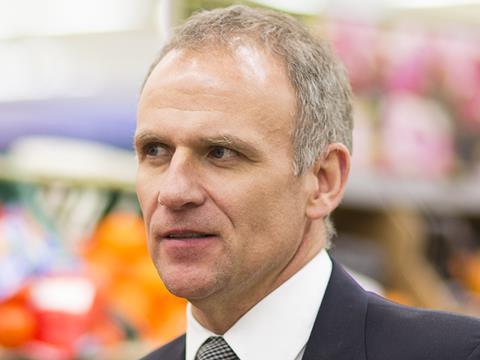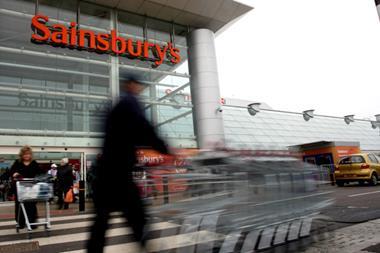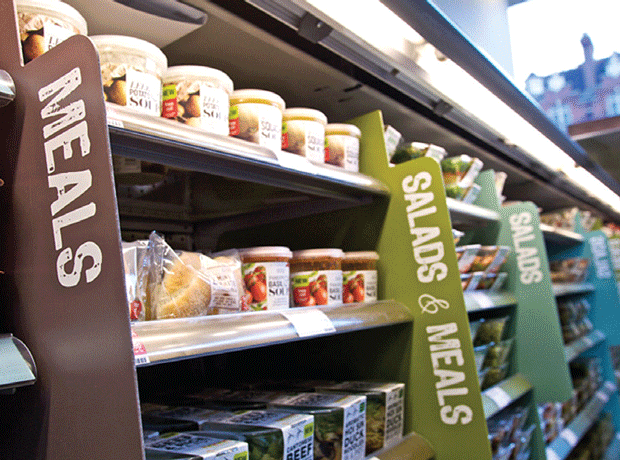
It was way back in 2009 that The Grocer gave Dave Lewis his unwanted nickname ‘Drastic Dave’ after he set about ‘transforming the business model’ at Unilever.
Eight years on it is again an apt description, after the man widely credited with taking Tesco from the edge of the cliff announced a further 1,200 job cuts at its shiny new HQ in Welwyn Garden City.
It is just three years since 2,000 HQ staff became the first victims of Lewis’ cuts after he took the helm at Tesco. They were followed by many more across the business.
If he didn’t re-earn the moniker then, he surely has now. But can Tesco justify these cuts and will its promise that they are being done for good reason stand up to scrutiny?
For Lewis, and for Tesco more widely, it is absolutely vital that it is not seen to be making its staff pay the price for its continued turnaround and competitiveness with the discounters.
Certainly the timing of the announcement is unfortunate in many ways. Not that there is ever a good time to tell staff they are for the boot.
What rankles is not so much the fact that this comes a week after Tesco announced 1,100 jobs were to go at its Cardiff call centre, which is closing as all operations move to another centre in Dundee.
It’s more that Tesco’s slashing of yet more HQ jobs also comes just days after it announced what it called its “biggest ever investment” in staff with a two-year deal to increase hourly pay rates by 10.5% by 2020.
Usdaw, which welcomed the announcement on the back of Tesco’s upturn in profitability, must be feeling pretty shame-faced today as it consoles staff hit by the redundancies to come.
Lewis, to be fair to him, has always done a good job of managing to push through needed rationalisation at Tesco while avoiding a damaging collapse in morale.
Tesco has handled the PR surrounding its recent redundancies much better than some of its rivals, notably Asda, which sparked a chain reaction of job cuts beginning in 2014 as it, too, tried to modernise its business.
Unpopular changes
Lewis has continued to invest in store staff numbers, despite many unpopular changes including slashing 24-hour opening, moving to twilight shifts, cutting store management roles and closing many unprofitable stores.
But much of this was done when Tesco was seen to be in crisis and on the back foot. It’s much harder to cut jobs and still triumph in the PR battle when you are seen to be winning in business.
Only last month Lewis triumphantly presented the supermarket’s first UK like-for-like sales growth for seven years.
At the time he made great play of Tesco’s success in keeping a lid on inflation better than its supermarket rivals, with Tesco significantly outperforming the market in keeping prices down.
Of course, today’s unwelcome news for staff is not as brutally straightforward as Tesco using staff cuts to pay for cheaper prices. But the retailer itself makes the link between the cull and “serving shoppers better”.
Obvious questions
There are now obvious questions facing Tesco. Key among them is: is this is the end of the cuts or will more jobs go? And if so, will they be extended, like the previous set of HQ redundancies, to stores?
Let us hope the answer is no because, like it or not, Tesco is now going to find itself with staff worried for their future, rather than buoyant on the back of turnaround success or a new pay rise.
Thoughts will no doubt turn to The Grocer’s story from February 2016, which revealed Tesco had considered a scenario of 39,000 store staff cuts over the following three years, the equivalent of shedding one in six employees.
At the time, it vehemently denied that this was anything other than a worst-case scenario plan. But it also denied there were plans for any more major job cuts.



















No comments yet